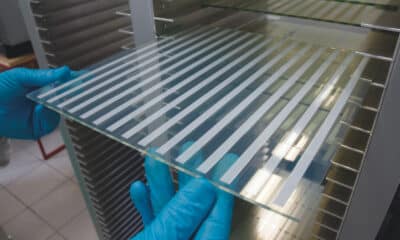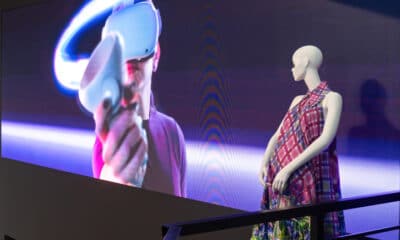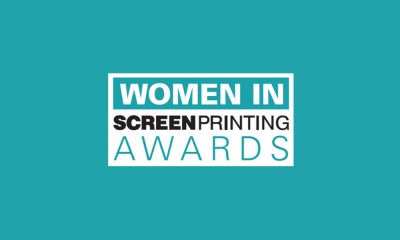 Our special "SWOT: Changes & Challenges" issue brings industry experts together to consider strengths, weaknesses, opportunities, and threats to screen printing. Here, MacDougall prefaces the "Opportunities" segment of our exploration.
Our special "SWOT: Changes & Challenges" issue brings industry experts together to consider strengths, weaknesses, opportunities, and threats to screen printing. Here, MacDougall prefaces the "Opportunities" segment of our exploration.
 Our special "SWOT: Changes & Challenges" issue brings industry experts together to consider strengths, weaknesses, opportunities, and threats to screen printing. Here, MacDougall prefaces the "Opportunities" segment of our exploration.
Our special "SWOT: Changes & Challenges" issue brings industry experts together to consider strengths, weaknesses, opportunities, and threats to screen printing. Here, MacDougall prefaces the "Opportunities" segment of our exploration.
Let’s pretend for a few minutes that Screen Printing (the magazine) doesn’t exist, because screen printing (the process) was never invented. Now imagine some smarty pants comes along and invents an analog production process that can be used by a wide range of manufacturers in distinctly different economic sectors – not just in your town, but worldwide. This process is simple, with three components that are all easily acquired, and it’s scalable, as they like to say in angel investor land.
What if that process were present in every cell phone, car, and consumer electronic device?
What if it were also used in the manufacturing of solar cells, hydrogen fuel cells, and all sorts of conductive interfaces?
Advertisement
What if the process could help make an array of medical devices and life-enhancing products?
What if it could stimulate art, culture, and local economies – all while creating new jobs in cities, towns, and villages around the world?
What if it could transfer a graphic onto almost everybody’s shirt, from the local bowling team to the World Series champs? That’s a lot of shirts, and a lot of images.
What if the process could decorate the majority of textiles used to create dresses, bed linens, and tea towels worldwide?
What if it were ultimately used to find an inexpensive and universal alternative to oil and coal, and had the potential to eliminate CO2-emitting power sources?
What if it allowed pieces of paper to be turned into $20, $100, or even $1000 bills – legally?
Advertisement
I may be some hick living on an island in the Pacific, but in this world of startups and “next big things,” a single process that could do all of these things would be PDA (pretty darned amazing). Its unique nature and wide-ranging uses would present some incredible opportunities to individuals, businesses, and society in general.
So let’s stop pretending: This process already exists, and it is called screen printing. We have, through our involvement as owners, suppliers, printers, and clients in the screen-printing industry, complete access to all the capabilities it presents.
Best of all, screen printing doesn’t belong to one person. It is about as open-source as anything can get. It is available to plant engineers in the most modern factories in the world, who are ready to spend and make millions or billions pumping out the next generation of iPhones. It is available to kids in the barrio with imaginations and cobbled-together, Rube Goldberg contraptions that allow them to print artwork on a shirt, which can be sold to make money for more shirts, creating a cycle of increasing prosperity that enables small business to grow organically.
Screen printing is, at its heart, an entrepreneurs’ process, and it stubbornly resists all the attempts by digital printing to relegate it to the scrap heap. It’s the whack-a-mole of printing processes. A big part of what keeps it viable and alive is its adaptability. Coupled with the concept of using it as a manufacturing process, as opposed to just a print method, we have a range of industries that can use screen printing for much more than graphic reproduction. And contrary to popular opinion, its use is expanding, not contracting.
A recent trip to Seattle produced a nice snapshot of the current state of screen printing. Every indication signaled that it is alive and well and growing in North America. First, I got a tour of GM Nameplate. Kind of non-descript from the outside, the building covers the better part of a city block and rises a few stories high. Not exactly a sprawling factory in the classic sense of a smoke-belching steel mill, but once you have a look at what they produce there, you can appreciate why screen printing is a key player in the present and future of manufacturing. In the lobby, I saw a display with bits and pieces of the Tesla Roadster – parts made by GM Nameplate. As we went further into the building, we passed by whole wings of offices and work areas occupied by designers and support staff. Eventually, we got to the central core of the complex, where an array of screen-printing presses were steadily turning out circuits, graphic overlays, controls, and housings with graphics. There were clean rooms with roll-to-roll presses printing medical products, finishing rooms where they punch, cut, and form all of the printed product, and then whole other wings where the screen-printed bits get assembled into (and onto) hundreds if not thousands of bigger components or finished products. GM Nameplate has six other locations in the US and around the world, and business is booming. I recognized a lot of brand names. Turns out, not everything is made in China. More of that work is coming back to North America, especially in the medical field, where clients and the FDA demand stringent control over manufacturing and production process.
My hosts made this point more than once: Screen printing remains key to their operation. They try to make things using digital printers or offset presses, but nothing delivers the ink deposit, precision, speed, and flexibility with materials and processing that they can get with screen printing.
Advertisement
Later that day a bit south of there, I hit Fogland Studios. This is the opposite end of the screen-printing spectrum, and another example of the opportunities that can be found at the end of a squeegee. Using a shared space with mostly home-built equipment, the designers and printers there make books, magazines, shirts, stickers, posters, coozies, cards, and a number of other creative handmade items. They teach others to do the same, and represent the maker movement that is part of a worldwide return to localized craft and small business. Central to this is screen printing, and not just at Fogland. That craft beer you love? Check the bottle – there is a major shift in beverage-container labeling, back to good ol’ screen printing. The cute handmade baby clothing or cool garments from the local boutique fashion house? Those are decorated with screen printing, too.
The wide spectrum between users of screen printing and the products they make ensures that the people who practice this process, however you want to describe it – an art, a technology, or a crazy analog app – will always have a job. Opportunity awaits through many doors. We only have to open them.
For more from our "SWOT: Changes & Challenges" special issue:
Editorial Insights
Screen Printing: A Technology at a Crossroads, Steve Duccilli
Strengths
Why Industrial Applications Hold Tremendous Promise for Screen Printing, Mike Young
Screen Printing: King of Textiles, Charlie Taublieb
The Future of Functional Printing, Wim Zoomer
A Partial List of Industrial Applications for Screen Printing, Wim Zoomer
Weaknesses
The Limitations of Screen Printing in the Graphic Arts, Tamas S. Frecska
Why Web-to-Print Software Matters for All Printing Businesses, Eileen Fritsch
A Sampling of Web-to-Print Software, Eileen Fritsch
Opportunities
Are Screen Printers Part of the Maker Movement? Kiersten Wones
Threats
Threats to Screen Printing, Inside and Out, Mark Coudray
Digital Ceramic Printing: A Logical Success, Sophie Matthews-Paul

 Art, Ad, or Alchemy1 month ago
Art, Ad, or Alchemy1 month ago
 Case Studies1 month ago
Case Studies1 month ago
 Andy MacDougall1 month ago
Andy MacDougall1 month ago
 Columns2 weeks ago
Columns2 weeks ago
 Editor's Note2 weeks ago
Editor's Note2 weeks ago
 Thomas Trimingham2 months ago
Thomas Trimingham2 months ago
 Marshall Atkinson2 weeks ago
Marshall Atkinson2 weeks ago
 News & Trends1 month ago
News & Trends1 month ago















